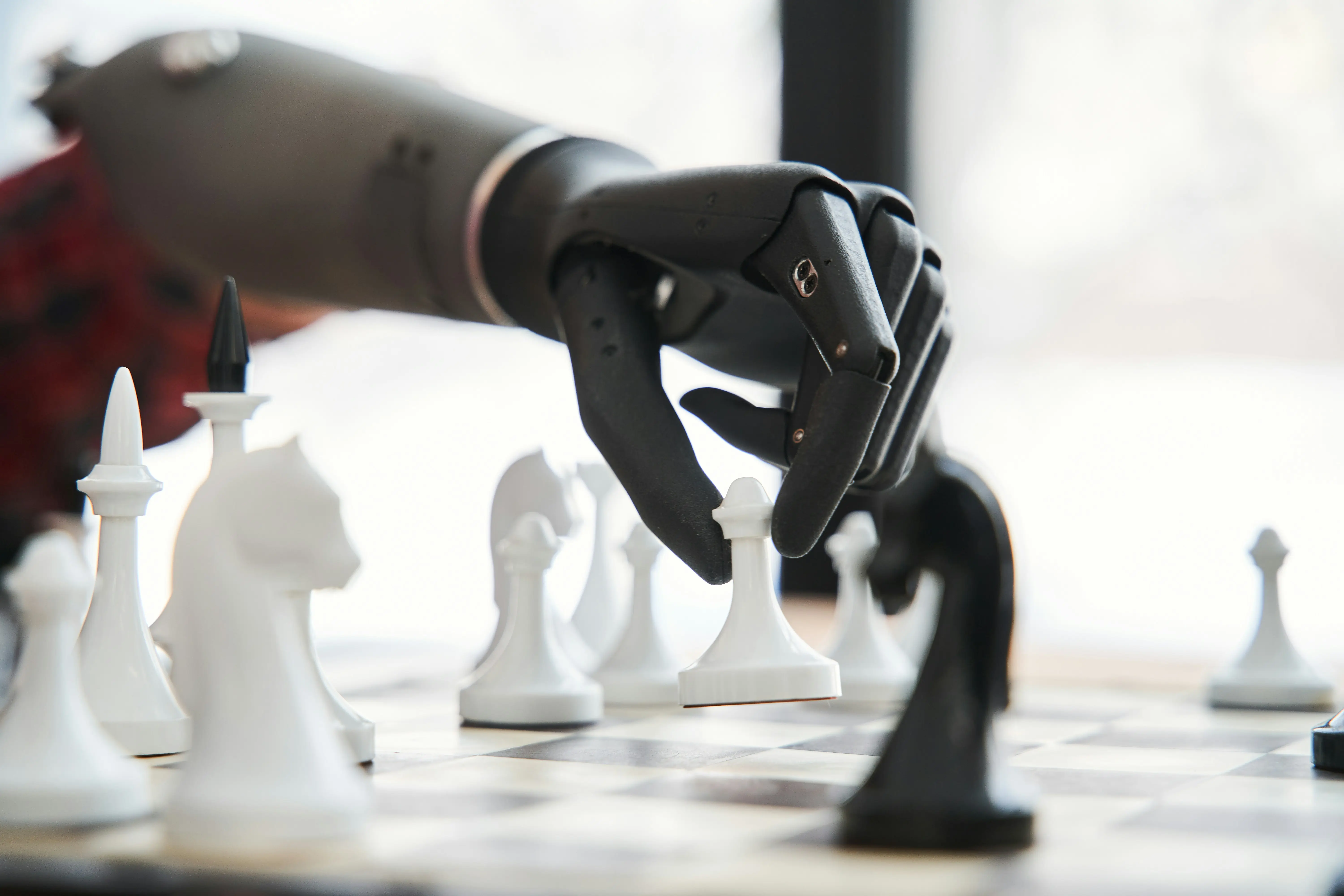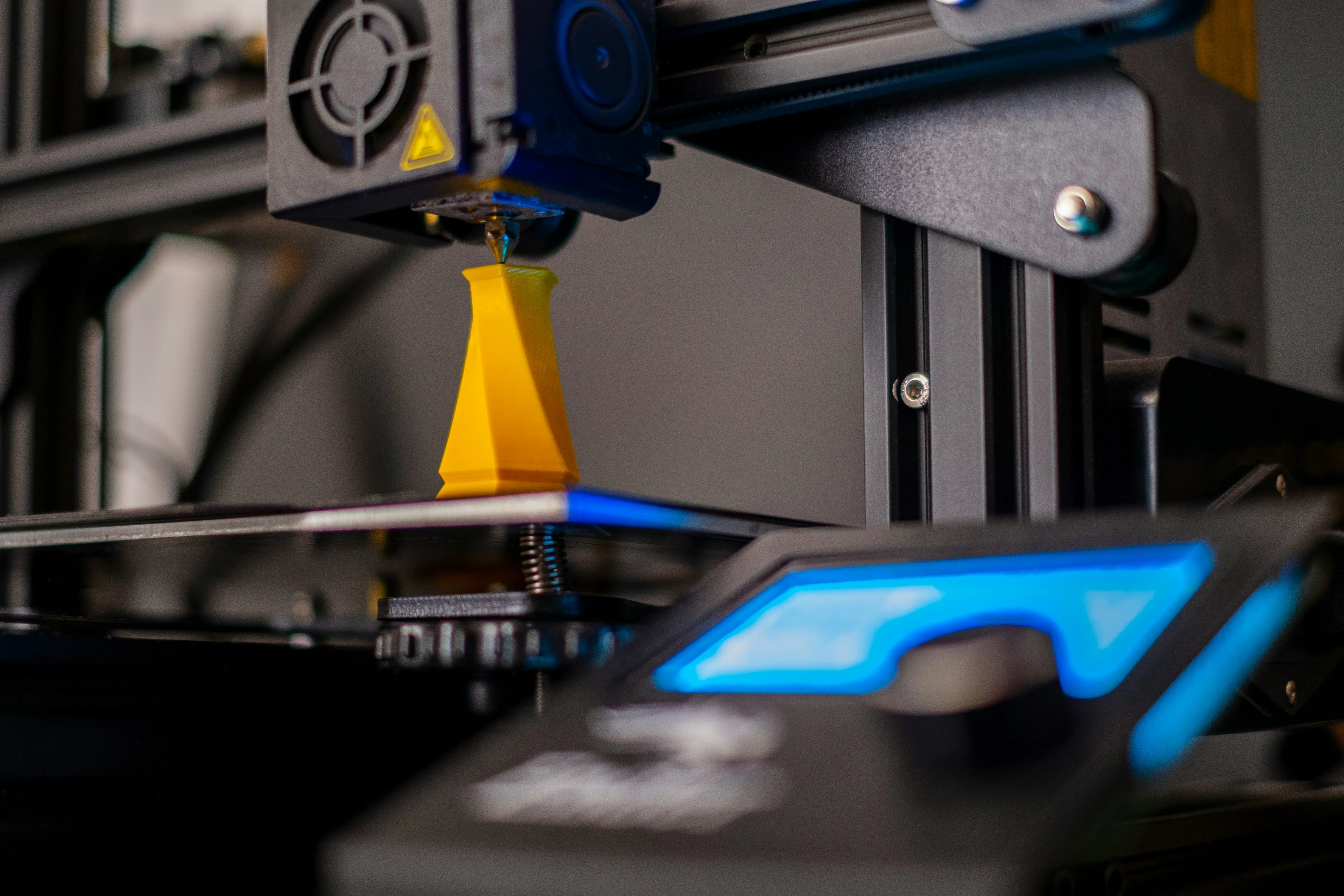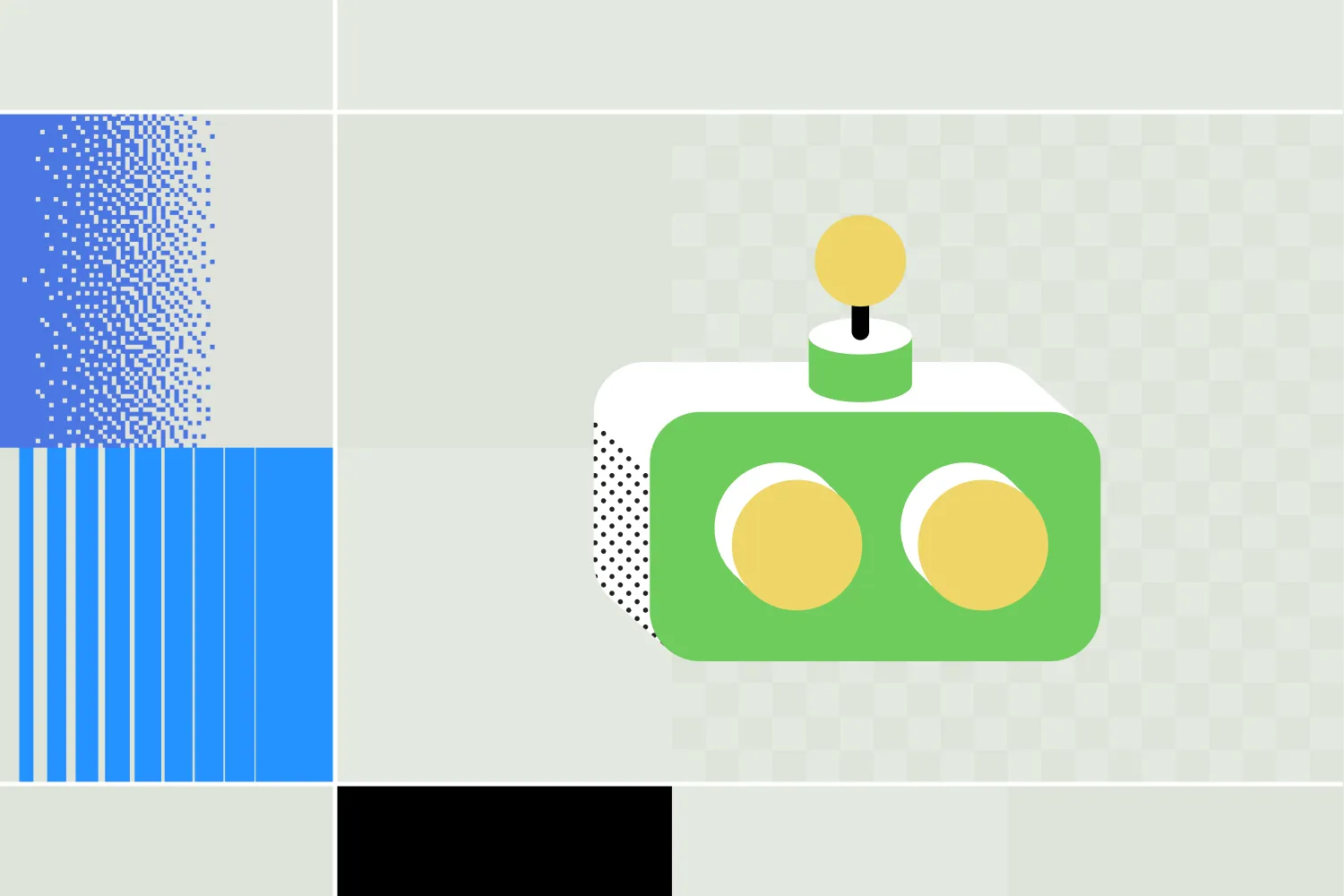- Los agentes de IA van desde sistemas de reflejo simples que reaccionan a entradas actuales hasta agentes sofisticados que planifican, aprenden y coordinan tareas complejas en distintos ámbitos.
- Los agentes de reflejo simple actúan únicamente según las condiciones inmediatas, mientras que los agentes de reflejo basados en modelos mejoran la toma de decisiones usando modelos internos para rastrear y predecir cambios en el entorno.
- Los sistemas multiagente cuentan con varios agentes de IA que colaboran o compiten, permitiendo aplicaciones avanzadas como autos autónomos coordinándose en el tráfico o la gestión de cadenas de suministro complejas.
Los agentes de IA han crecido enormemente en los últimos años. Y con su tecnología y capacidades complejas, hoy en día existen muchos tipos diferentes de agentes de IA.
Un agente de IA es un software que realiza tareas. A diferencia de un chatbot estándar, puede ejecutar acciones en nombre de un usuario.
Hay una amplia variedad de agentes de IA, desde termostatos inteligentes y autos autónomos, hasta agentes con interfaces de chat. Todos estos casos de uso se agrupan en una de las siete categorías principales de agentes de IA. En este artículo, compartiré los 7 tipos principales de agentes de IA y algunos ejemplos reales de agentes de IA.
1. Agentes de Reflejo Simple
Un agente de reflejo simple es un sistema de IA que toma decisiones únicamente en función de la entrada actual de su entorno.
Utiliza un conjunto de reglas condición-acción para asociar entradas observadas con respuestas específicas. Cuando detecta un cierto estado en el entorno, ejecuta la regla correspondiente.
No tiene memoria ni modelo interno del mundo, por lo que solo puede funcionar eficazmente en entornos totalmente observables donde cada decisión se basa únicamente en la entrada actual.
Ejemplos de Agentes de Reflejo Simple
- Un termostato que enciende la calefacción si hace demasiado frío
- Un robot que gira cuando choca con una pared (hola, Roomba con un gato encima)
- Un chatbot básico que responde “¡Hola!” cuando un usuario dice “Hi”
.webp)
2. Agentes de Reflejo Basados en Modelos
Un agente de reflejo basado en modelos es un agente de IA que toma decisiones basándose tanto en la entrada actual como en un modelo interno del mundo.
A diferencia de los agentes de reflejo simple, este tipo lleva un registro del estado del entorno a lo largo del tiempo. Utiliza un modelo —es decir, información almacenada sobre cómo funciona el mundo— para llenar vacíos cuando el entorno no es completamente observable.
Cuando recibe una nueva entrada, actualiza su estado interno, consulta sus reglas condición-acción y elige la mejor respuesta considerando tanto la percepción actual como lo aprendido en interacciones previas.
Ejemplos de Agentes de Reflejo Basados en Modelos
- Un robot aspirador que recuerda la distribución de una habitación y evita áreas que ya ha limpiado
- Un agente LLM que continúa una conversación manteniendo un registro de las entradas previas del usuario
- Una IA de videojuegos que reacciona no solo a lo que ve, sino también a lo que sabe de antes en la partida

3. Agentes de Aprendizaje
Un agente de aprendizaje es un agente de IA que mejora su desempeño con el tiempo aprendiendo de sus experiencias.
Cuenta con cuatro componentes principales: un elemento de aprendizaje, un elemento de desempeño, un crítico y un generador de problemas.
El elemento de desempeño elige las acciones, mientras que el elemento de aprendizaje ajusta su comportamiento según la retroalimentación. El crítico evalúa los resultados de las acciones usando un estándar predefinido, y el generador de problemas sugiere nuevas acciones para mejorar el aprendizaje.
Esta estructura permite que el agente se adapte a los cambios, refine estrategias y funcione eficazmente incluso en entornos desconocidos.
Ejemplos de Agentes de Aprendizaje
- Un agente de IA para criptomonedas que ajusta estrategias de trading según el rendimiento del mercado
- Un motor de recomendaciones que mejora sus sugerencias de productos según el comportamiento del usuario
- Un chatbot de salud que aprende de las interacciones con pacientes para mejorar la precisión del triaje

4. Agentes Basados en Utilidad
Un agente basado en utilidad es un agente de IA que elige acciones según cuál resultado se espera que proporcione el mayor valor o “utilidad”.
En lugar de solo buscar alcanzar un objetivo, este agente evalúa diferentes resultados posibles y selecciona el que maximiza una función de utilidad predefinida.
Esto le permite manejar situaciones donde hay múltiples formas de alcanzar un objetivo, o donde se deben hacer compensaciones. Requiere la capacidad de comparar opciones, predecir consecuencias y clasificar resultados según preferencias o prioridades.
Ejemplos de Agentes Basados en Utilidad
- Un chatbot de ventas que prioriza clientes potenciales según la probabilidad de conversión
- Un bot de trading de acciones que equilibra riesgo y retorno para maximizar ganancias a largo plazo
- Un chatbot empresarial que agenda reuniones para minimizar conflictos y maximizar la conveniencia
5. Agentes Jerárquicos
Un agente jerárquico es un agente de IA que organiza su proceso de toma de decisiones en múltiples capas o niveles, donde los niveles superiores gestionan objetivos abstractos y los inferiores manejan acciones específicas.
Este agente divide tareas complejas en sub-tareas más pequeñas, asignando a cada nivel de la jerarquía un alcance diferente de toma de decisiones.
Las capas superiores pueden planificar estrategias a largo plazo, mientras que las inferiores gestionan datos de sensores y respuestas en tiempo real. La comunicación fluye entre los niveles, permitiendo coordinar objetivos generales con la ejecución detallada.
Esta estructura facilita la gestión de la complejidad y la adaptación del comportamiento en diferentes plazos o prioridades.
Ejemplos de Agentes Jerárquicos
- En manufactura, un agente de alto nivel planifica el proceso de ensamblaje mientras los niveles inferiores controlan los brazos robóticos y la sincronización
- En una fábrica inteligente, diferentes capas gestionan los horarios de producción, la coordinación de máquinas y las operaciones físicas

6. Agentes Basados en Objetivos
Un agente basado en objetivos es un agente de IA que toma decisiones evaluando qué acciones le ayudarán a alcanzar un objetivo específico.
Al agente se le asignan uno o más objetivos —resultados deseados que quiere lograr. Utiliza algoritmos de búsqueda o planificación para explorar posibles secuencias de acciones y luego selecciona las que tienen mayor probabilidad de llevarlo al objetivo.
A diferencia de los agentes de reflejo, no solo reacciona: razona sobre las consecuencias futuras antes de actuar. Esto lo hace más flexible y capaz en entornos dinámicos o desconocidos, aunque también requiere más recursos computacionales.
Ejemplos de Agentes Basados en Objetivos
- Un sistema de navegación que calcula la mejor ruta hacia un destino
- Una IA que resuelve rompecabezas buscando movimientos que lleven a completar el rompecabezas
- Un brazo robótico que planifica una secuencia de movimientos para ensamblar un producto con éxito
7. Sistemas Multiagente (MAS)
Por último, pero no menos importante: el sistema multiagente.
Un sistema multiagente (MAS) es un sistema compuesto por varios agentes de IA que interactúan y trabajan juntos (o a veces compiten) para lograr objetivos individuales o compartidos.
Cada agente en el sistema opera de forma independiente, con sus propias capacidades, metas y percepción del entorno.
Estos agentes se comunican y coordinan —ya sea directamente mediante mensajes o indirectamente observando cambios en el entorno. El sistema en su conjunto puede resolver problemas que son demasiado complejos o distribuidos para que un solo agente los gestione.
Los sistemas multiagente pueden ser cooperativos, competitivos o una combinación de ambos, según el diseño y los objetivos.
Ejemplos de Sistemas Multiagente
- Vehículos autónomos coordinándose en una intersección para evitar colisiones
- Un conjunto de bots financieros gestiona facturación, detección de fraudes y reportes mediante automatización de flujos de trabajo con IA
- Un sistema de cadena de suministro donde diferentes agentes gestionan el inventario, los envíos y la previsión de la demanda.

Crea agentes de IA personalizados
No es difícil crear un agente de IA personalizado, y puedes hacerlo gratis.
Botpress ofrece un constructor visual de flujos con función de arrastrar y soltar, seguridad de nivel empresarial, una amplia biblioteca educativa y una activa comunidad en Discord con más de 20,000 creadores de bots.
Nuestra plataforma extensible te permite crear cualquier chatbot personalizado con cualquier integración personalizada — y nuestro Integration Hub está lleno de conectores preconstruidos para los canales más importantes.
Empieza a construir hoy. Es gratis.
Preguntas frecuentes
¿Cuáles son los 7 tipos de agentes de IA?
Los 7 tipos son: agentes de reflejo simple, agentes de reflejo basados en modelos, agentes basados en objetivos, agentes basados en utilidad, agentes de aprendizaje, agentes jerárquicos y sistemas multiagente.
¿ChatGPT es un agente de IA?
Sí, ChatGPT puede considerarse un agente de IA: recibe entradas, las procesa y genera respuestas, a menudo utilizando un enfoque orientado a objetivos o utilidad según cómo se implemente.
¿Qué son los agentes inteligentes y cómo funcionan en entornos digitales?
Los agentes inteligentes son entidades diseñadas para actuar en diferentes entornos digitales. Recopilan información de su entorno, evalúan la situación actual y ejecutan acciones para alcanzar objetivos definidos. Su desempeño está influenciado por las acciones externas que realizan en entornos observables.
¿Qué papel juega la inteligencia artificial en el funcionamiento de los agentes?
La inteligencia artificial potencia a los agentes inteligentes al brindarles la capacidad de aprender, razonar y adaptarse. Los agentes utilizan la IA para mejorar su base de conocimientos, lo que les permite tomar decisiones más sofisticadas en distintos entornos.
¿Qué conforma la base de conocimientos de los agentes inteligentes?
El conocimiento de los agentes inteligentes abarca información sobre el entorno, reglas predefinidas y una comprensión básica de la situación actual. Este conocimiento es la base de sus procesos de toma de decisiones.
¿Qué es el elemento de desempeño en el contexto de los agentes inteligentes?
El elemento de desempeño de los agentes inteligentes se refiere a su capacidad para alcanzar objetivos y tomar decisiones que optimicen sus acciones en un entorno determinado. Es un componente clave que determina la eficiencia y eficacia del agente.
¿Pueden los agentes operar en estructuras jerárquicas?
Sí, los agentes jerárquicos son un tipo de agente inteligente que funciona en niveles estructurados. Los agentes de nivel superior supervisan la toma de decisiones generales, mientras que los de nivel inferior se encargan de tareas específicas dentro del marco general. Esta estructura jerárquica permite operar de manera eficiente en entornos complejos.
¿Los agentes inteligentes funcionan con inteligencia limitada?
Sí, muchos agentes inteligentes funcionan con inteligencia limitada, lo que significa que tienen un alcance definido de conocimientos y capacidades. Esta limitación les ayuda a centrarse en tareas y entornos específicos donde su experiencia es más relevante.





.webp)

